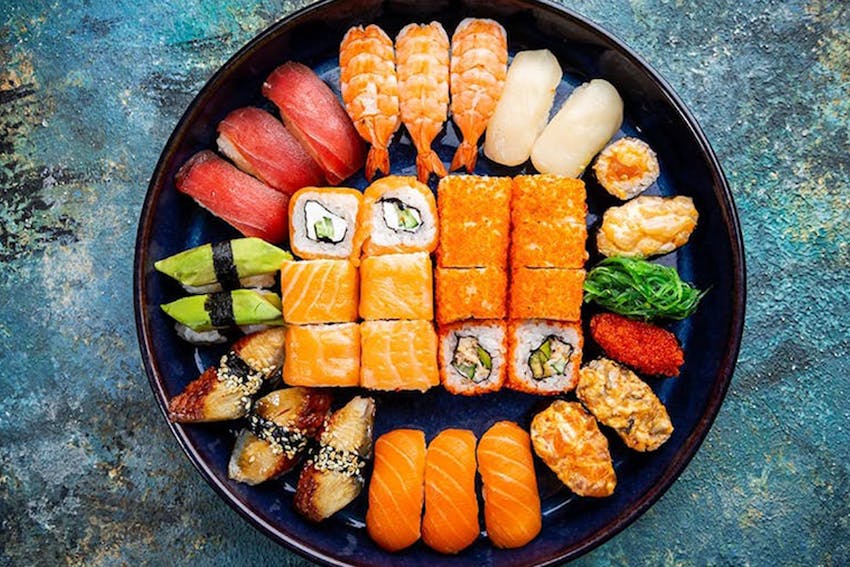Your Sushi Cheat Sheet
18 June is World Sushi Day, when food lovers around the globe celebrate their shared enthusiasm for this beloved cuisine. Want to get involved?
Whether you’re planning to be part of the conversation online, or just want to learn a little more about sushi so you can eat it with a new-found appreciation, our primer guide can help you out…
Sushi in its earliest form was not actually Japanese – it originated in Southeast Asia before travelling along the Mekong River to China and finally to Japan. It was however, the Japanese who developed sushi into what we know it as today, in Hanaya Yohei around the mid 1800s. Sushi, by definition, is a dish of vinegared rice accompanying a variety of ingredients – usually seafood or vegetables.
Sushi only has one key ingredient – sushi rice, which is also known as shari or sumeshi. Traditionally this is medium-grain white rice, but brown rice and short-grain rice can also be used.
Sushi is almost always served with the accompaniments of pickled ginger, wasabi and soy sauce. If you’re fancy you might also garnish your sushi with daikon radish or pickled daikon.
Don’t confuse sushi with sashimi. Sashimi is thinly sliced raw fish (occasionally meat) and is just one ingredient in sushi. Somewhat confusingly, sashimi can also be served with a portion of rice. But that still doesn’t make it sushi.
Never assume that any raw fish is edible. Uncooked fish that is safe to eat must be frozen, stored and handled in a specific way. Only then can it be labelled “Sashimi Grade”.
Many countries have created their own take on sushi, but you’ll be hard pressed to find any of them in Japan – with one exception. A Norweigian businessman hoping to boost his country’s salmon industry in the 1980s introduced salmon sushi to the world, including Japan.
America’s most popular spin on sushi is probably the California roll, which is made with crab or imitation crab, avocado and cucumber. In the Southern United States, crawfish is a popular sushi roll filling. In fact, much American sushi eschews raw fish all together, because of the country’s strict laws on freezing it before serving in order to kill parasites (as well as the scarcity of acquiring fresh seafood inland).
The seaweed used in sushi is called nori, and comes in wafer-thin sheets, pre-roasted and ready to eat.You can eat sushi with any soy sauce but Japanese brand Kikkoman is restaurant grade. And don’t be lavish with it – using excessive amounts of soy sauce for your meal, and particularly pouring yourself more than you need is considered extremely disrespectful.
Wasabi, which is famously spicy, is made with horseradish and mustard seed. You’ll only need a small dollop but you can mix with soy sauce to dilute a little if you like. The ginger that accompanies sushi is called gari and is served pickled and shaved. It’s there to cleanse your palette.
When making sushi you’ll need a seriously sharp knife. Actual sushi chefs use a Japanese Hocho knife, which is sharpened only on one side.
The most dangerous sashimi out there is puffer fish. But you’d have to be really brave – we’ve all heard about fugu, the dish so deadly it has to be prepared by specially trained chefs to ensure there’s no poison still lurking around.
Some people have called for Maki rolls, the sushi that features colourful designs and intricate pictures, to be recognised as an art form.
It’s okay to eat sushi with your hands – plenty of Japanese people do and it is in fact the traditional way to eat it. Sushi is made by hand, so there’s a beautiful symmetry in eating it that way too.
Japanese tourists holidaying in Western countries complained so much about the sushi they encountered there that Japan’s Agriculture Ministry set up a panel to discuss a certification system for Japanese restaurants abroad in order to “spread correct Japanese gastronomic culture”
You should always eat your fish as quickly as you can after preparation, as it oxidises once cut and exposed to the air. That means bad news for flavour.
Is Sushi one of the 14 major allergens?
Sushi typically contains allergen ingredients such as Fish and Soy.
Download the 14 Allergens Guide for more information here.



